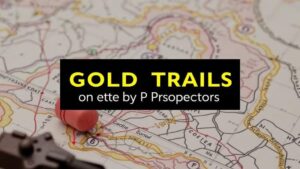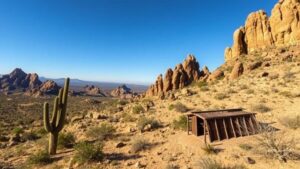Creating a Treasure Hunter’s Portfolio to Showcase Your Discoveries
Creating a Treasure Hunter’s Portfolio to Showcase Your Discoveries
A treasure hunter’s portfolio is essential for professionals and enthusiasts alike to showcase their findings, methodologies, and personal growth within the hobby or profession of treasure hunting. This portfolio serves as a comprehensive collection of evidence, reflections, and achievements associated with treasure hunting pursuits. The following sections will outline how to create an effective portfolio that not only highlights your discoveries but also communicates your skills and experiences as a treasure hunter.
Understanding the Purpose of a Treasure Hunter’s Portfolio
The primary purpose of a portfolio is to demonstrate one’s expertise and the breadth of their treasure hunting experiences. Unlike a casual collection of photographs or artifacts, a well-structured portfolio provides insight into the following:
- The types of treasures discovered, including historical significance.
- Your methods of searching, including techniques and equipment used.
- Any historical research conducted to enhance discoveries.
- Your contributions to the community, such as leading workshops or participating in forums.
A strong portfolio can enhance credibility when networking with other treasure hunters or seeking potential sponsorships and collaborations.
Key Components of a Treasure Hunter’s Portfolio
When creating a treasure hunters portfolio, it is crucial to include specific components that collectively tell your story and showcase your skills.
1. Personal Biography
Your portfolio should begin with a personal biography that outlines your background, experience, and motivation for treasure hunting. This section can include:
- Educational background in archaeology, history, or related fields.
- Your journey into treasure hunting and any notable mentors.
- Key skills youve developed, such as metal detecting, excavation, and historical research.
2. Documentation of Discoveries
The heart of your portfolio should be a well-organized presentation of your discoveries, featuring:
- High-quality photographs of your finds and locations.
- Detailed descriptions, including context, location, and significance.
- Any attempts at restoration or preservation, with before-and-after images where applicable.
For example, if you discovered a Civil War era musket, include details about its condition upon finding, research into its history, and the inspections or restorations you carried out.
3. Research and Historical Context
Including a section dedicated to the historical and archaeological relevance of your discoveries adds depth to your portfolio. This could involve:
- Annotated bibliographies of relevant literature.
- Links to academic papers or articles where your finds are mentioned.
- Collaborations with historians or archaeologists that lend credibility to your work.
4. Stories and Anecdotes
Personal stories enhance engagement and make your portfolio relatable. In this section, consider:
- Sharing challenges faced during hunts, such as adverse weather conditions or difficult terrains.
- Interactions with fellow treasure hunters and local communities.
- Inspirational moments, such as finding a long-lost artifact of significant value.
5. Community Involvement
Highlighting your involvement in the treasure hunting community can demonstrate commitment to the field. Include:
- Memberships in treasure hunting clubs.
- Workshops or talks given to educate others.
- Participation in community events, such as metal detecting rallies or archaeology day.
Formatting and Presentation
To create an aesthetically pleasing and easily navigable portfolio, consider the following presentation tips:
- Use a clean design with consistent typography and color schemes.
- Organize content by categories for easy access, such as “Discoveries,” “Research,” and “Community Engagement.”
- Consider electronic formats (e.g., PDF or website) for easy sharing.
Real-World Applications and Benefits
A treasure hunter’s portfolio can be beneficial in numerous ways:
- Helps discussions with potential investors or sponsors interested in supporting future treasure hunting endeavors.
- Acts as a valuable tool in educational settings, converting personal experiences into teaching moments.
- Establishes a professional online presence when shared through social media platforms or personal websites.
To wrap up, crafting a detailed and engaging treasure hunter’s portfolio not only showcases your findings but also elevates your status within the treasure hunting community. By following the outlined components and presenting them effectively, you will create a valuable resource that reflects your journey and expertise in this fascinating field.

